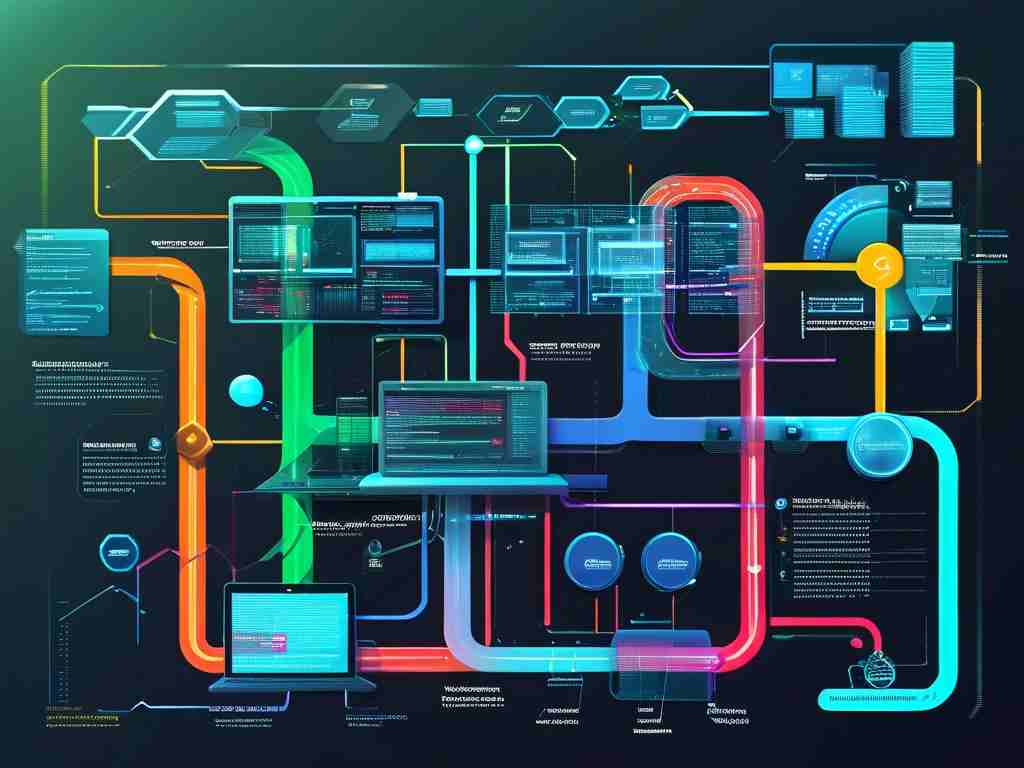In today’s distributed computing environments, load balancing has become a cornerstone of ensuring high availability and optimal resource utilization. Designing a robust load balancing technology roadmap requires careful planning, technical insight, and alignment with business objectives. This article explores actionable steps to create an effective blueprint for implementing and managing load balancing solutions.

Understanding Load Balancing Fundamentals
Load balancing distributes network traffic across multiple servers or resources to prevent overload, reduce latency, and enhance fault tolerance. Common algorithms include Round Robin, Least Connections, and Weighted Distribution. Before drafting a roadmap, teams must evaluate their current infrastructure, identify performance bottlenecks, and define scalability requirements. For instance, an e-commerce platform handling seasonal traffic spikes may prioritize dynamic scaling capabilities.
Step 1: Assess Current Infrastructure
Begin by auditing existing systems. Document server configurations, traffic patterns, and failure points. Tools like Wireshark or cloud-native monitoring services (e.g., AWS CloudWatch) can reveal uneven resource usage. A financial services company, for example, might discover that database servers face higher loads during trading hours, necessitating targeted balancing strategies.
Step 2: Select Load Balancing Algorithms
Choose algorithms based on workload characteristics. Round Robin suits homogeneous server clusters, while Weighted Distribution benefits environments with mixed-capacity hardware. Advanced scenarios may require adaptive algorithms like Least Response Time. Include code snippets for configuration testing. For example, an NGINX setup using Round Robin:
http {
upstream backend {
server 10.0.0.1;
server 10.0.0.2;
}
server {
location / {
proxy_pass http://backend;
}
}
}
Step 3: Design Architecture
Decide between hardware-based (F5 BIG-IP) or software-based (HAProxy, Kubernetes Ingress) solutions. Hybrid approaches are gaining traction—combining cloud load balancers (AWS ALB) with on-premises systems for hybrid infrastructures. Incorporate redundancy; a global SaaS provider might deploy GeoDNS to route users to the nearest regional load balancer, minimizing latency.
Step 4: Test and Optimize
Simulate traffic using tools like Apache JMeter or Locust. Measure metrics such as request throughput, error rates, and recovery time during failover events. Iterate based on results—adjust weights, enable health checks, or introduce caching layers. A streaming platform improved uptime by 40% after refining health check intervals and adding circuit breakers.
Step 5: Implement Monitoring and Maintenance
Continuous monitoring is critical. Integrate with SIEM systems for real-time alerts on traffic anomalies. Schedule periodic reviews to adapt to evolving workloads. For example, a healthcare app updated its roadmap quarterly to accommodate new compliance requirements and user growth.
Challenges and Mitigations
Common pitfalls include overcomplicating architectures and underestimating security needs. Address these by adopting incremental upgrades and embedding TLS termination within load balancers. Case studies show that organizations using automated scaling policies reduced manual intervention by 60%.
Future Trends
Emerging technologies like AI-driven predictive balancing and edge computing integration are reshaping roadmaps. Teams should allocate R&D resources to explore machine learning models that pre-empt traffic surges, ensuring proactive resource allocation.
In , a well-structured load balancing technology roadmap balances technical rigor with business agility. By following these steps—assessment, algorithm selection, architectural design, testing, and ongoing optimization—organizations can build resilient systems capable of meeting modern digital demands.









